A Beginner’s Guide to Dehydrating Food
Dehydrating food allows it to have a shelf life that’s much longer than usual. It works by inhibiting bacterial action, which is the reason behind food spoilage.
But does dehydrating food kill bacteria?
No, it doesn’t. What it does is remove moisture, just like what the process’ name suggests, which allows bacteria to thrive.
In many instances, you can consume dehydrated food items as they are.
However, when using them as cooking ingredients or you just want to experience them as close to their non-dehydrated state as you possibly can, you will have to properly rehydrate them first.
How to rehydrate dehydrated food is really, really easy. You simply have to soak it in room temperature water twice its amount. So, for instance, if you wish to rehydrate two cups of dehydrated apples, you have to soak them in four cups of water for five to ten minutes before you can snack on them.
Many dehydrated vegetables have to be simmered in hot water until they are soft and tender.
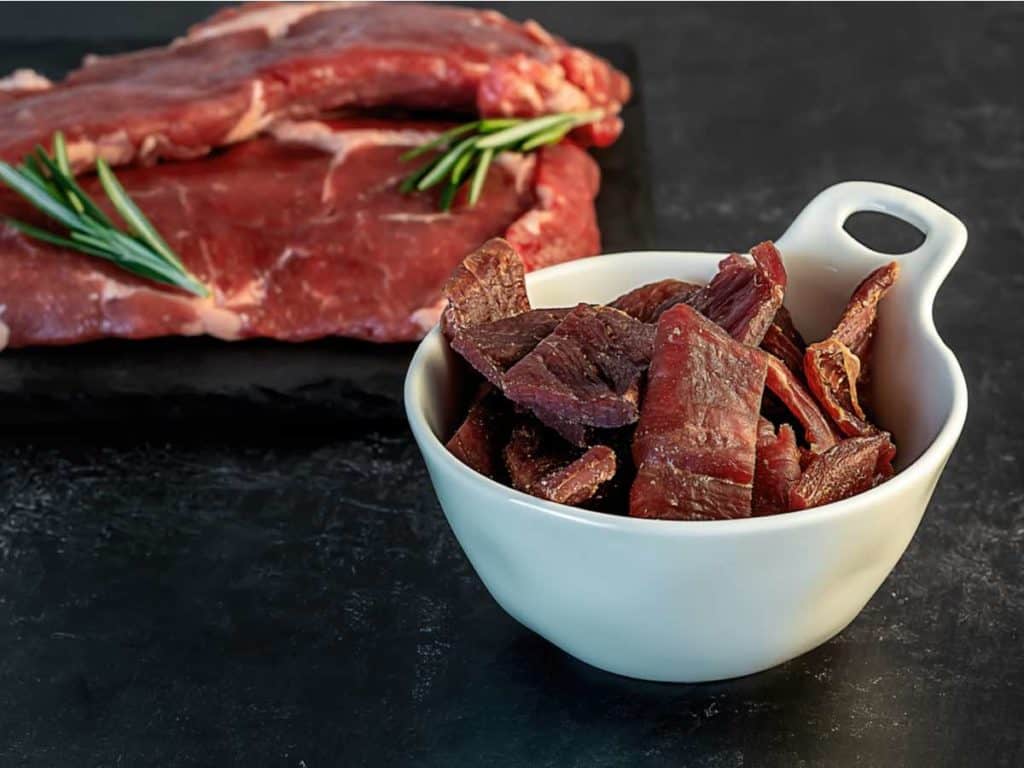
But there are so many other important matters that you need to know about dehydrating food before getting started with the habit. Keep on reading to know some of the basics.
Knowing the Pros and Cons of Food Dehydration
Before trying your hands at dehydrating food, it’s a good idea to first know some of the reasons why it’s worth your time. You should also learn that there are some not-so-admirable things associated with it.
This is why before we talk about things such as how do you use a dehydrator, which foods can be dehydrated and how you go about dehydrating them, let us first take a look at some of the many pros and a few of the cons, too.
After checking them out, you will have a better idea of whether or not dehydrating food is for you.
Benefits of Dehydrating Foods
Many people are into dehydrating food. It doesn’t really come as a surprise since the health benefits of a food dehydrator use are hard to overlook.
There are also numerous practical uses for food dehydration, the majority of which can change your life for the better, especially if you are a health- and budget-conscious person.
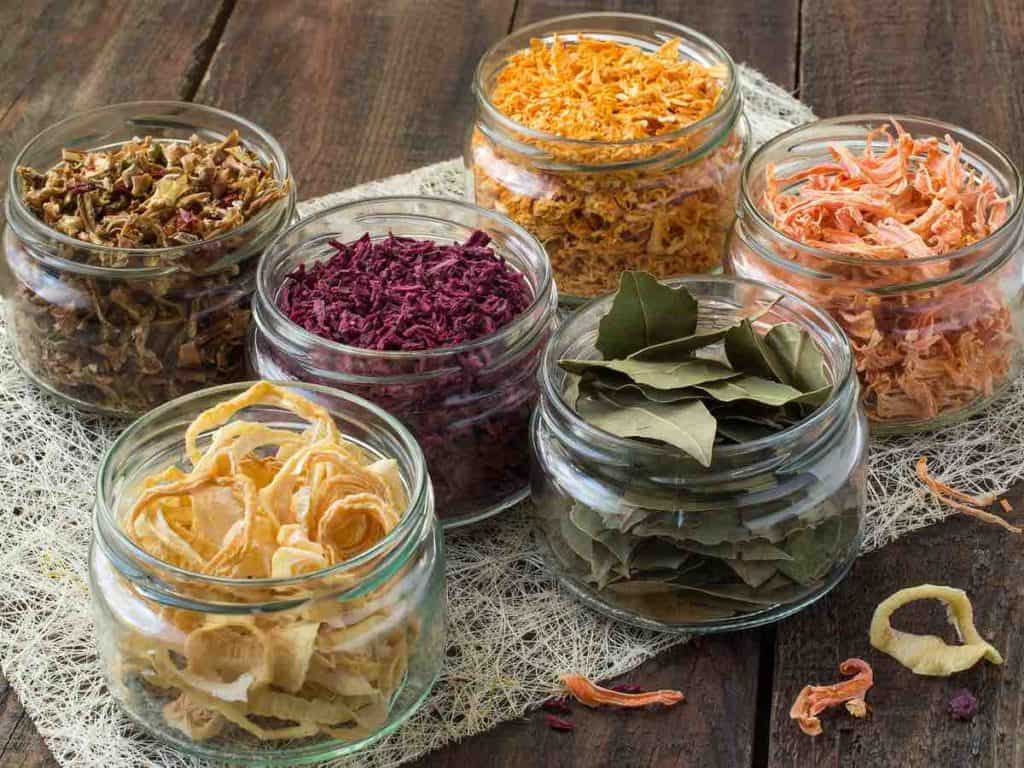
Here are some of the reasons to jump on the food dehydrating bandwagon:
No Artificial Preservatives
The majority of canned and packaged foods at the supermarket can last for a long time because they are laden with artificial preservatives.
Many of these extremely questionable chemicals can have an assortment of unfavorable health effects, say doctors.
On the other hand, dehydrated foods are absolutely devoid of harmful preservatives and other chemicals that you don’t want. They only have one ingredient: the dehydrated foods themselves.
Healthier and Tastier Snacks
Cooking destroys many of the vitamins and minerals in food. Dehydrating food, on the other hand, does not destroy any of those important nutrients.
This is why dehydrated foods are more nutritious than cooked foods or foods preserved in other ways.
According to a study, antioxidants in dehydrated foods are twice more potent than those in fresh fruits. This means that snacking on dehydrated foods neutralizes harmful free radicals better.
Easier on the Pocket
Especially if you love growing your own fruits and vegetables, you can enjoy the money-saving perks of dehydrating foods even more. That’s because it will allow you to extend the shelf life of your harvest substantially.
It will also save you from the need to take regular trips to the supermarket.
It’s true that you will have to shell out money to get your hands on a food dehydrator, which can make food dehydrating counter-intuitive if you want to save some cash.
However, in the long run, you will realize how economical it really is.
Saves a Lot of Precious Space
Dehydrated foods look shriveled because much of their moisture content has been removed. This causes them to take up less space, thereby allowing you to free up space in your kitchen cabinets and pantry.
For instance, a couple of pounds of tomatoes can be stored in a couple of modest-sized airtight containers. There is no way you can achieve this feat when storing a couple of pounds of fresh or whole tomatoes!
Portable and Lightweight
It’s not just space in your kitchen cabinets and pantry that food dehydration can conserve. It can also help conserve space in your backpack each time you travel.
Since dehydrated foods are lightweight because of the fact that much of their moisture content has been removed, they won’t weigh you down.
Whether you are on your way to a tropical paradise on your own or to a campsite with the entire family, dehydrated foods are healthy and non-messy snacks to take with you.
Disadvantages of Dehydrating Food
Above are some of the most noteworthy perks of dehydrating food. Unfortunately, there are also some disadvantages to it.
The good news is that there are just a few of them. What’s more, the several incredible benefits of dehydrating food can easily outweigh all of the negatives.
Check if you can learn to live with the following downsides associated with food dehydration:
Time-Consuming
Some foods need to stay in the dehydrator for as short as four hours only.
However, some foods have to remain in the dehydrator for up to 36 hours to get the desired results.
Aside from the dehydration process itself, preparation steps such as washing, peeling, slicing, and, in some instances, blanching also take up time.
Apparently, dehydrating food cannot be done in a snap. The good news is that your dehydrator can carry out its job with very little to no supervision, thus allowing you to engage in other activities, such as sleeping at night.
Change in Taste and Appearance
One look and it’s plain to see that dehydrated foods look different from their whole and fresh counterparts. They may taste a little different, too.
For instance, dehydrated apples may look darker and taste sweeter. Especially if it’s your first time to welcome dehydrated foods into your life, you may be taken aback initially.
However, some people actually prefer the appearance, texture and taste of dehydrated foods. But who knows — after a while, you may also share their sentiments and never want to go back.
So, does dehydrated food taste good? It’s a subjective matter. You be the judge!
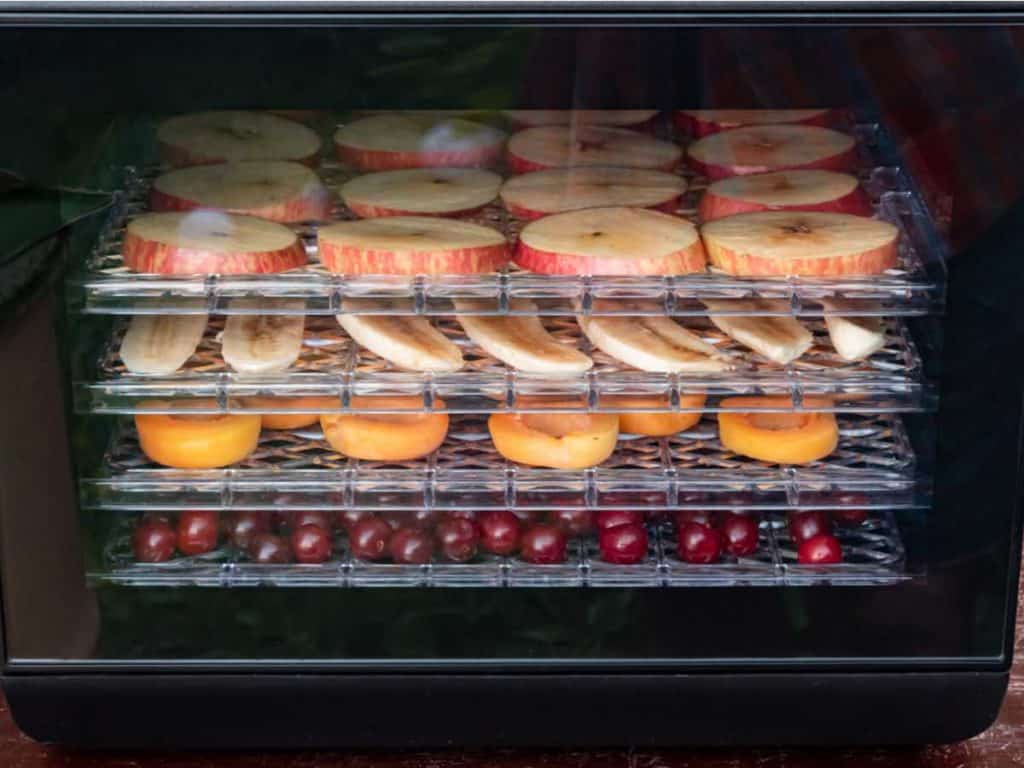
Destruction of Enzymes
In some instances, dehydrating foods can cause the destruction of enzymes. Put simply, enzymes are molecules that help in the process of digestion.
The thinner the foods and the hotter the temperature in the dehydrator are, the more beneficial enzymes get destroyed along the way.
But this consequence is not at all a bad thing at times. For instance, dehydrating nuts and seeds destroys the enzymes that can give some people’s digestive system a difficult time.
Different Ways to Dehydrate Foods
Other than using a food dehydrator that you can easily order online or offline from a brick-and-mortar home appliance store, you can dehydrate foods in many other ways, too.
The majority of them do not even require you to purchase and use any kitchen appliances, which helps eliminate much of the initial capital cost.
Each method of dehydrating foods without the use of a food dehydrator that you will come across below has its own set of strengths and weaknesses.
Check them out to see if owning a food dehydrator is optional…
Air Drying
When it comes to preserving foods, our ancestors relied on air drying. It makes perfect sense — exposing foods to the air causes moisture in it to evaporate.
However, it’s not all the time that air drying is the best appliance-less way to dehydrate foods. If a food item tends to spoil quickly when kept at room temperature, it is a good idea to opt for a different method.
But if it’s perfectly fine for the food item to be left exposed to the air for a while, then air drying is the way to go.
Drying foods through air exposure is ideal for delicate fruits and vegetables that the sun can damage easily.
Yes, our ancestors also dehydrated foods by exposing them to the sun (we will talk about it in a few). Air drying is also effective for dehydrating herbs. This is especially true since herbs tend to dry out fast.
And to make sure that they won’t get damaged in the process, foods being air-dried have to stay in the shade.
Needless to say, not everything that you want to dehydrate can be air-dried alone. For instance, it is perfectly fine to air-dry meat. However, it needs to be exposed to high temperatures at the same time.
Sun Drying
Just about anything that cannot be dehydrated through air drying can be sun-dried. This method is another way to dehydrate foods that our ancestors have relied on heavily since they had no refrigerators that time.
Fruits, vegetables, herbs, meat, fish — you can dry all of these food items quickly and effectively by placing them under the scorching sun for a few to several hours.
Some may have to be sun-dried for a few days to ensure that most of their moisture content will be gone, which is what can give them an impressive shelf life.
Unfortunately, just because there is a sun above your head doesn’t necessarily mean right away that you can dehydrate food properly without the use of a dehydrator.
The minimum temperature in your area must be 85°F.
The higher the temperature, the better you will be able to dehydrate foods with the help of the sun.
Sun drying is suitable for food items that need to be properly dehydrated, particularly those that may harbor harmful bacteria along the way and put your health in danger.
This is what makes sun drying kind of risky. Because you cannot control the climate, you may fail to meet the desired results.
So, in other words, the process of dehydrating foods under the sun is best done if the climate in your area is mostly sunny and breezy.
Solar Drying
There is something that solar drying and sun drying share in common. It’s none other than the sun.
However, both dehydrating methods utilize the sun in slightly different ways. In sun drying, direct sunlight is the one that removes moisture from foods.
In solar drying, on the other hand, it’s the air heated by the sun that removes moisture from anything that is being dehydrated.
To make solar drying possible, the food items need to be placed in an enclosed space or structure. When the sun hits it, the air inside is heated. This increases the temperature inside the enclosure, causing foods to dry out.
Unlike sun drying, you will have to shell out money if you want to utilize solar drying.
The enclosed space or structure necessary for this process of dehydrating food can be purchased or created from scratch. The enclosure can be as large as a greenhouse or as small as a crate that you can place on a tabletop.
You can think of solar drying as using a food dehydrator that doesn’t run on electricity.
But just like sun drying, solar drying is best done in places where the climate is sunny most or all of the time. Otherwise, the desired results may not be enjoyed.
Oven Drying
Worry not if taking advantage of the forces of nature is not an option.
Even without a food dehydrator, you can still dehydrate foods in the comfort of your kitchen, relying on electricity and a couple of common kitchen appliances. One of those that you can use as a makeshift dehydrator is an oven.
Especially if you are into baking all sorts of baked treats, you will be happy to know that your trusted oven can save you from the need to shell out money just to own a food dehydrator, too.
It’s true that an oven is generally bulkier than a food dehydrator. However, it can still do the job. All you have to do is set the oven to a low temperature, particularly the temperature required for properly dehydrating the food item that you want to dehydrate.
Needless to say, your oven should be able to go low enough for your dehydrating needs.
You may be tempted to set the oven to a higher temperature to speed up the dehydrating process. Refrain from doing this because it will cook the food items and not dehydrate them!
Also, you will have to keep the oven door open by two to three inches.
This is to allow moisture to escape. Also, it is to keep the interiors of the oven from getting too hot, thereby keeping the food items you are dehydrating from ending up cooked or burned.
Since you will have to leave the oven door ajar, your kitchen may overheat.
Aside from an oven, you may also use an oven toaster.
But since it’s small and the heating elements are placed very close to the tray or trays, it’s not unlikely for the foods you are dehydrating to get charred.
Basic oven toasters that do not permit manual adjustment of the temperature are not suited for dehydrating food.
Microwave Drying
Do you wish to give dehydrating food a try without having to buy a dehydrator? Or are you planning to dehydrate a very small amount of food only? Then you can count on your microwave oven.
Compared to a traditional oven, you can dehydrate food items in a microwave faster. To get started, all you have to do is use the defrost function of this modern-day kitchen appliance.
Dehydrating sliced fruits can be completed anywhere from 20 to 40 minutes.
Unlike when using a food dehydrator that’s specifically designed for the job, you will have to keep on checking your food items to ensure that they won’t end up overly dehydrated.
You can dehydrate many herbs in just two to three minutes.
The Takeaway
You can dehydrate food with or without the use of a kitchen appliance. By knowing the necessary steps to take as well as throwing some patience and commitment, you can dehydrate foods even without a dehydrator.
However, it is apparent that the most convenient and effective way to dehydrate a wide variety of food items is by getting your hands on a food dehydrator.
Because it comes with an array of features necessary for dehydrating food in the most trouble-free way, you will find engaging in food dehydrating a pleasurable experience every single time.
Make sure that you purchase and use a food dehydrator that will go well with your specific needs.
Getting to Know a Food Dehydrator More
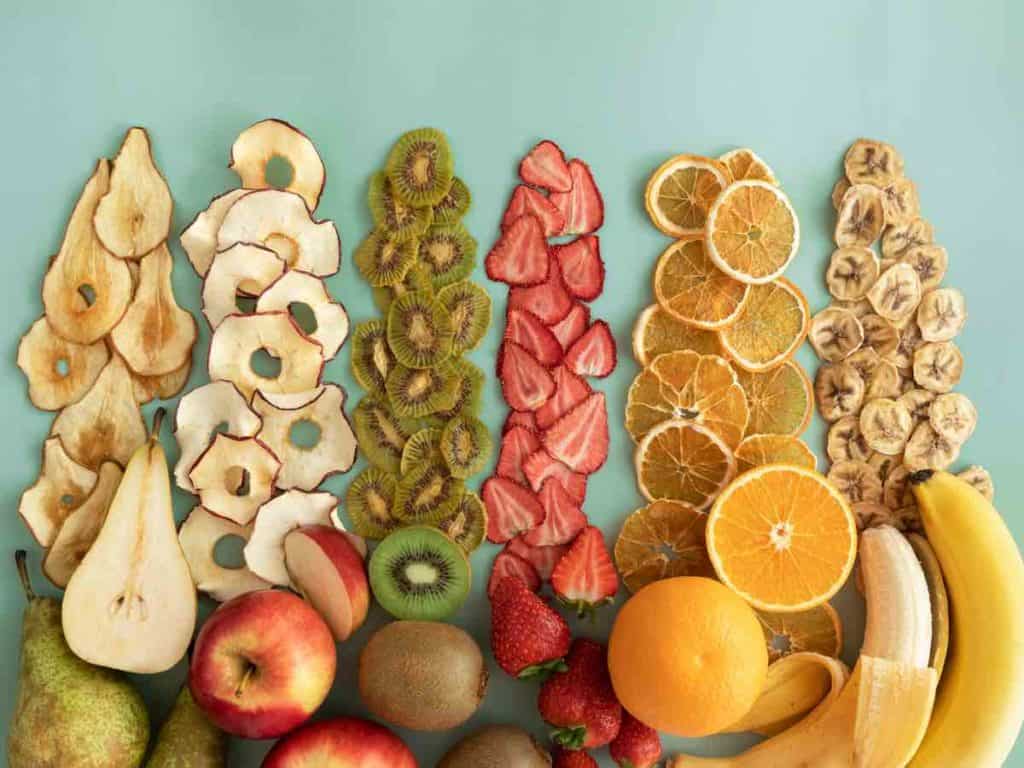
Just like what the name pretty much says, a food dehydrator, or simply dehydrator, is a small kitchen appliance that’s designed to dry or dehydrate food.
It effectively removes moisture from food by circulating air at a low temperature. A dehydrator can do so with the help of a fan and heating element.
The temperature of commercially available dehydrators can range anywhere from below 100°F to 160°F or higher. Generally speaking, the wider the temperature range, the more versatile the dehydrator is.
Making the bulk of the entire structure of a dehydrator are the trays. Needless to say, it’s on those trays where the foods you want to dehydrate are placed. Some dehydrators have trays that slide out.
Other dehydrators have trays that stack on top of each other, a feature that helps to save space. Later, we will have a quick guide on choosing a dehydrator.
Earlier, it was mentioned that dehydrating food can take anywhere from four hours to up to 36 hours. And now you might want to ask the question: do food dehydrators use a lot of electricity?
The good news is that a food dehydrator is one of the most efficient kitchen appliances that you can own.
Most of today’s dehydrators will require their owners to shell out anywhere from $0.29 and $1.20 only when they use them for ten hours. The amount of electricity a dehydrator consumes will depend on its size and features.
Before you get to enjoy the energy-efficient feature of a dehydrator, you need to get your hands on it first.
So, how much is a food dehydrator?
Some dehydrators in the current market can be as cheap as $30. Others can cost up to $400 or more. The larger and more feature-packed a dehydrator, the steeper the price tag that it has.
If you need a recommendation on a good dehydrator, then check my page on the best machines available currently.
If you want to take dehydrating food seriously, it is a good idea to invest in a high-quality dehydrator that will allow you to dehydrate all sorts of food. Needless to say, you should opt for a nice one at a reasonable price.
When shopping for a food dehydrator, there are some important things that you should consider, such as…
Temperature
Different foods dehydrate at different temperatures. It’s exactly because of this why you should look for a food dehydrator whose temperature can be adjusted without trouble.
It should also be able to generate enough heat, preferably 160°F or higher, to make sure that dense vegetables and meat will end up properly dehydrated.
However, the unit should also be able to go below 100°F, which is vital for dehydrating foods that tend to end up dry very quickly. Some very good examples are herbs and sprouted grains.
Before you place a dehydrator in your shopping cart, see if the temperature intervals are small and specific, too.
This will allow you to have as much control as possible over the temperature to which you wish to expose the food you are dehydrating, thus allowing you to achieve the best results.
Timer/Auto Shut Off
Most of the time, dehydrating foods can take a long time to complete. This makes it quite easy for you to completely forget about it.
This is when the benefit of having a timer or auto shut off feature comes in. It makes it more agreeable to dehydrate foods because the risk of ending up with excessively dry finished products can be eliminated.
Some of the most basic and cheapest dehydrators turn on when plugged and turn off when unplugged.
If you own one of them, you have to be around all the time so that you can unplug it as soon as the foods in it are dehydrated perfectly.
Otherwise, you might end up with the hardest and ugliest dehydrated foods. This is an issue that you can easily dodge if the one you own can turn off on its own.
It’s true that dehydrating foods can take some time to complete.
However, it doesn’t necessarily mean that it should take up most of your precious time. A programmable food dehydrator allows you to partake in other activities.
As a matter of fact, it can let you dehydrate foods while you are taking a trip to dreamland.
Fan Position
Especially when dehydrating a lot of foods all at the same time, it’s of utmost importance for the heat inside the food dehydrator to be evenly distributed throughout.
Otherwise, some of the foods you are dehydrating, especially those that are placed far from the heating element, may not be as properly dehydrated like the rest.
This is when the importance of choosing the right fan position comes in. When shopping, you will come across different dehydrators based on the fan position.
Top, bottom, back — these are the three fan positions. Experts in food dehydration highly recommend going for a dehydrator whose fan is positioned at the back.
That’s because this permits better heat distribution, thereby allowing you to enjoy dehydrated foods with consistent qualities.
A unit with a fan at the top may fail to properly dehydrate foods on the lowermost trays. On the other hand, a unit with a fan at the bottom may not be able to completely dehydrate foods on topmost trays.
To avoid this issue, rotating the trays every now and then will have to be done, which can make the entire experience daunting.
Noise
Where there’s a fan, there’s noise. This is why you can expect to hear a low hum or buzz coming from a food dehydrator each time you switch it on. Some dehydrators generate lots of noise. Others give off tolerable noise levels.
Opting for a dehydrator model that produces the least possible noise is recommended. This is especially true if you want nothing but peace and quiet, including while spending time in the kitchen.
You should also go for a dehydrator that creates minimal noise if you are going to install it near someone’s bedroom.
Unfortunately, you won’t find the level of noise produced by the dehydrator on its box.
Because of this, you will have to rely on the comments of people who have left reviews online.
If many are complaining that the dehydrator you wish to purchase makes a lot of noise, consider checking out another unit for your ear’s sake.
Size/Capacity
There are a couple of important matters that you need to consider before you decide which particular food dehydrator brand or model you should go for.
First, bear in mind how much food you will be dehydrating every single time. Second, take note of the available space in your kitchen.
You should make sure that the space available in the dehydrator that you are about to get can accommodate everything that you will want to dehydrate in one go.
Collectively, the capacity of the dehydrator trays can range anywhere from four square feet to ten square feet or even larger.
There is no use in buying the largest food dehydrator that you can find if you are planning on dehydrating a handful of fruit and vegetable slices only at once.
Going for a dehydrator that’s too small for your food dehydrating needs can leave you frustrated and spending more time in the kitchen than necessary since it will require you to dehydrate foods in several batches.
Regarding the trays, they can either be stackable or capable of sliding out. Generally speaking, food dehydrators with trays that pile on top of each other are great for small kitchens.
Since they make use of vertical space, they tend to have a smaller footprint compared to counterparts with slide-out trays.
On the other hand, food dehydrators with trays that slide out usually have a larger footprint. There has to be enough horizontal space available to accommodate not only their sliding out trays but also their swinging doors.
But just because a food dehydrator has stackable trays doesn’t necessarily mean that it’s a great space-saver. For instance, most round models have a hole in the center of each tray.
This can considerably decrease the available area for the foods that you wish to dehydrate. So, in other words, it can waste precious space within the kitchen appliance.
Some food dehydrators with stackable trays are expandable. You can get your hands on additional trays, allowing your dehydrator to grow with your expanding food dehydration needs.
Ease of Use
The more user-friendly a food dehydrator is, the more you will use it. This will allow you to fully take advantage of the many perks that come with dehydrating foods, the ones that were discussed earlier.
Especially if you haven’t tried dehydrating foods or using a food dehydrator before, buying something that is trouble-free to use can help make your initial experience less stressful and nerve-racking.
Unfortunately, the more features a dehydrator has, the more complicated using it can get. The price tag can get steeper, too.
See to it that you read user reviews beforehand. If many of those who bought it say that they find it difficult to use the product each time, it’s a wise move to look for a different one.
Do you have family members or friends who are into dehydrating food?
Then ask them which brands or models of food dehydrators they are using and find out if using them is easy.
What’s great about knowing people with sufficient amounts of experience with food dehydration is that they can help you get started with the habit without trouble.
By the way, check that the trays are dishwasher-safe to make cleaning a breeze.
Cost
Just like what was mentioned not too long ago, the cost of a food dehydrator gets more expensive the more features that it packs.
This is why it’s not just your shopping budget that you should consider, but also your food dehydrating needs. There is no point in shelling out money for a feature-packed unit if you will not be able to use most of the features.
Aside from the features, the size and materials used are also factors that affect the price tag.
Compact food dehydrators that are out of plastic tend to be the easiest on the pocket. Their space-saving properties are due to the limited number of trays available.
On the other hand, massive food dehydrators that are out of premium materials tend to be the costliest of the bunch.
For instance, something that has a stainless steel body can cost you anywhere from $200 to $400.
A commercial food dehydrator, which is great if you are planning on dehydrating foods for profit, can carry a price tag higher than $400. A multi-tiered two-door commercial food dehydrator can cost almost $2,000.
Consider your food dehydrating needs and preferences so that you may be able to set the correct price range.
The Takeaway
Before you bask in the joys of dehydrating food, you should first go through the complicated task of considering the different matters that come with deciding which food dehydrator is right for you.
Keep in mind the things discussed above to end up with a dehydrator that you will love using each time.
Foods That You Can Dehydrate
What’s really nice about having a dehydrator is that you can dehydrate an assortment of foods. This is most especially true for those that you wish to store in your kitchen cabinet or pantry for a long time.
So, without further ado, let’s take a quick look at what foods are good for dehydrating:
Fruits
Some of the best foods to dehydrate are fruits. That’s because they are trouble-free to dehydrate.
What’s more, you can get impressive results, provided that you know how to dehydrate them properly.
The list of fruits that you can dehydrate is practically endless — from apples, bananas, pears, pineapple, cherries, apricots, to blueberries.
Here’s a wonderful idea: dehydrate seasonal fruits. This way, you can still enjoy them even if they are no longer in season. Simply imagine having slices of dehydrated mangoes or melons in the dead of winter!
Just like what’s mentioned earlier, dehydrating fruits helps keep the vitamins and minerals intact.
These days, having a strong immune system can spell the difference between staying healthy and suffering from COVID-19 complications. Regularly consuming dehydrated fruits loaded with immune-boosting nutrients can help you stay alive and kicking.
Quick Facts on Dehydrating Fruits
- Some fruits need to be peeled before dehydrating them, while others require no peeling. If you would eat the peel of a fruit in its natural state, then there is no need to peel it before slicing them.
- It’s a good idea to cut fruits into slices of equal thickness. Otherwise, not all of them will end up properly dehydrated. For best results, slice them into 1/4-inch or 1/2-inch pieces.
- Spray freshly squeezed lemon juice on fruits that tend to brown when exposed to the elements to keep their bright colors intact. Some common examples include apples, pears, apricots, and peaches.
Vegetables
Other than fruits, vegetables are phenomenal sources of vitamins and minerals, too.
The majority of them are also packed with fiber. According to health authorities, fiber can help regulate bowel movements, lower bad cholesterol levels, maintain normal blood sugar levels, and keep unwanted pounds at bay.
This is why dehydrating vegetables can help you live a long and happy life. You can dehydrate vegetables and add them to soups and stews. They also make for excellent backpacking meals.
Everyone knows that chips are bad for the health. That’s because they are loaded with fat, calories and sodium.
Dehydrating vegetables allows you to munch on something crispy and tasty without ruining your health. Sweet potatoes, eggplant, kale, spinach, beets, radish, butternut squash, parsnip — you can turn these into healthy chips.
Quick Facts on Dehydrating Vegetables
- If your vegetables are inorganic, consider peeling them before dehydrating them even if they have edible skins. This is to keep you from ingesting artificial pesticides and other harmful chemicals.
- Some vegetables that take a long time to cook tend to lose their flavor when dehydrated. Asparagus, broccoli, carrots, peas, and kale are some examples. To prevent this, they will have to be blanched first.
- Blanching vegetables is really easy. All you have to do is place them in the basket of your steamer. Steam vegetables for two to five minutes.
Nuts and Seeds
Because you can get your hands on them already dehydrated, you may be wondering why nuts and seeds are included on this list of foods that can be dehydrated.
Well, there is one good reason why it’s a great idea to consider dehydrating them. No, it has nothing to do with extending their shelf life as they already have a long shelf life.
Earlier, while the pros and cons of dehydrating foods were being talked about, it was mentioned that one of the few downsides to dehydrating foods is that it can destroy enzymes.
In the case of fruits and vegetables, that is a disadvantage. But in the case of nuts and seeds, that is a huge advantage.
That’s because destroying the enzymes of nuts and seeds makes them easier to digest. If you are one of those who end up with an upset stomach after eating nuts and seeds, then consider dehydrating them beforehand.
Quick Facts on Dehydrating Nuts and Seeds
- It was mentioned that dehydrating nuts and seeds makes them easier to digest. This helps not only to save some people from abdominal distress but also assists the body to absorb their nutrients better.
- There is a way to make it easier to digest nuts and seeds as well as promote better absorption of nutrients. And it is by soaking them in salted water overnight. The next day, rinse and dehydrate them.
- Dehydrating nuts and seeds can take anywhere from 12 to 24 hours. Large nuts need to stay in the food dehydrator the longest. Small nuts and seeds, on the other hand, dry out the quickest.
Sprouted Grains
It’s no secret that whole grains are some of the most nutritious foods on the face of the planet.
They are extremely rich in fiber, iron, potassium, magnesium, selenium and B vitamins. However, there is a way to make them healthier before adding them to the diet. It’s none other than sprouting them.
There are a couple of reasons why sprouting makes whole grains even more wholesome.
First, it breaks down some of the starch, thereby making the nutritional profile better.
Second, it destroys phytic acid, a substance that can keep the body from absorbing all the nutrients present in whole grains.
You can consume dehydrated sprouted grains in many ways. For instance, you can sprinkle them on porridge and salads. It’s also nice to have them stir-fried together with other vegetables, or crushed and used as breadcrumbs.
Quick Facts on Dehydrating Sprouted Grains:
- Some of the things that make sprouted grains superfoods are their enzymes. To save those enzymes from getting damaged during the dehydration process, keep the temperature to less than 113°F.
- After dehydrating your favorite sprouted grains, you can turn them into flour using a food processor. This allows you to have healthier alternatives to all-purpose flour for your various baking needs.
- Dehydrated sprouted grains have an impressive shelf life. If properly stored, they can stay in tip-top shape for up to six months. On the other hand, non-dehydrated sprouted grains can last for about three days only.
Herbs and Spices
Most supermarkets are selling dried herbs and spices.
But why pay for them if you can grow some herbs and spices in your garden and dry them, too?
Drying herbs and spices under the sun can take around three days. On the other hand, it will only take you one to four hours to dry them completely using a food dehydrator.
Dehydrated herbs make for excellent teas. They can also replace salt and sugar, allowing you to have healthier meals. On the other hand, dehydrated spices can turn just about any dish from ordinary to extraordinary.
What’s really nice about dehydrated herbs and spices is that they can be preserved and at the same time kept potent for up to 12 months.
So, in other words, you can benefit from their impressive vitamin, mineral and antioxidant content without having to step foot inside the supermarket each time.
Quick Facts on Dehydrating Herbs and Spices
- The best time to harvest herbs for dehydration is just before they start to bloom flowers. If you are unable to dehydrate them right away, place them in water just like cut flowers.
- Separate the leaves from the stems before you store dehydrated herbs. You may place the leaves in an airtight container whole. But you may also crush them between your fingers.
- What’s nice about dehydrating herbs and spices is that you can place different ones in your food dehydrator without the need to worry about their flavors mingling.
Meat and Fish
Are you into all sorts of fun and exciting activities?
Then you should consider dehydrating meat if you want easy access to protein-rich and extremely satisfying treats no matter where you go or regardless of what you do.
There are many types of raw meat that you can dehydrate to make them last for a long time and easy to pack, too. You can dehydrate lean cuts of beef to turn them into jerky. How to make jerky with a food dehydrator is really easy.
You can also dehydrate strips of chicken or turkey, as well as ground meat and meat in cans.
Fish may be dehydrated as well. But because some fish are fatty and thus challenging to dehydrate, you should stick to lean fish types.
Some wonderful examples are bass, halibut, sole, cod, red snapper, pike, and flounder. Needless to say, stay away from fatty ones such as tuna, salmon, mackerel, and butterfish.
Quick Facts on Dehydrating Meat and Fish
- It’s important that you dehydrate meat and fish on a high-temperature setting. This is to make sure that any bacteria that can put your health in some form of danger will be killed in the dehydration process.
- Most of the time, meat and fish have to be dehydrated at a temperature of not less than 155°F. If you are planning on dehydrating meat and fish, you should opt for a dehydrator with a wide temperature range.
- Worry not in case you are unable to remove every fatty portion thoroughly. Each time you see liquefied fat on the surface of the food item, all you have to do is pat it with a kitchen towel.
Pet Treats
Did you know that you can also dehydrate a number of food products to turn them into healthy and delectable dehydrated pet food?
The nicest thing about making treats for your pet from scratch is that you can rest assured that the ones you will give to your pawed pal are totally free of preservatives and other harmful chemicals.
Just about any type of meat that your pet loves to eat can be placed in the dehydrator for several hours to turn it into a treat that no pet food and supplies store or supermarket in your area is offering.
Chicken, turkey, duck, lean beef, fish — these are the top choices of certified pet lovers love to dehydrate for their furry friends. You may also dehydrate organ meats such as liver, heart and kidneys.
Veterinarians agree that organ meats are some of the most nutrient-dense foods that you can give to your beloved pet.
Lots and lots of dog food recipes done in dehydrator are posted on the internet. If you want nothing but the healthiest and tastiest treats for your pet, buy a food dehydrator and check out some recipes in cyberspace.
Quick Facts on Dehydrating Pet Treats
- Especially if your pet’s health requires extra love and care, giving it homemade dehydrated food can help ensure that it won’t consume ingredients that can cause complications.
- Unfortunately, it’s not all the time that dehydrated pet treats made from scratch are the best for pets. This is especially true for those that need to obtain a special blend of nutrients from the diet.
- Dehydrate meat and fish for your pet at the same temperature as dehydrating meat and fish for your consumption. Doing this helps ensure that your pet won’t ingest bacteria that can threaten its wellbeing.
The Takeaway
With so many foods to dehydrate for your pleasure (and your pet’s, too), it’s plain to see that investing in a dehydrator is a fantastic idea.
You can turn practically anything into something that looks different, has an interesting texture, packs more flavors, boasts of improved nutritional profile, and can last for up to five years or more!
Just Before You Start Dehydrating Food
There are many benefits that come with dehydrating food.
Similarly, there are many ways to go about it.
Using a food dehydrator is definitely the best way to dehydrate various food items. Thanks to its many features, you can dehydrate food properly, thus allowing you to achieve the best possible results.
Now that you know the basics of dehydrating food, the only remaining steps that you need to take are getting your hands on a good dehydrator and having some real-world experience with food dehydration.
Related Post: Top 10 Dehydrators

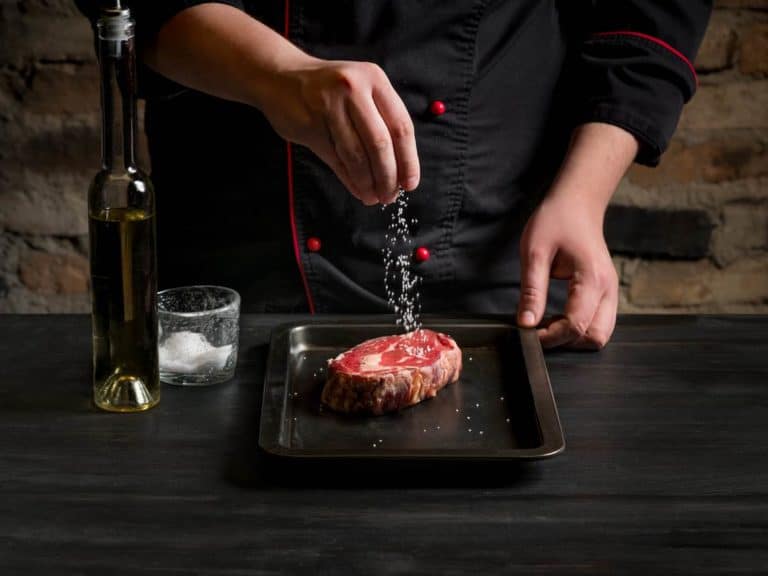

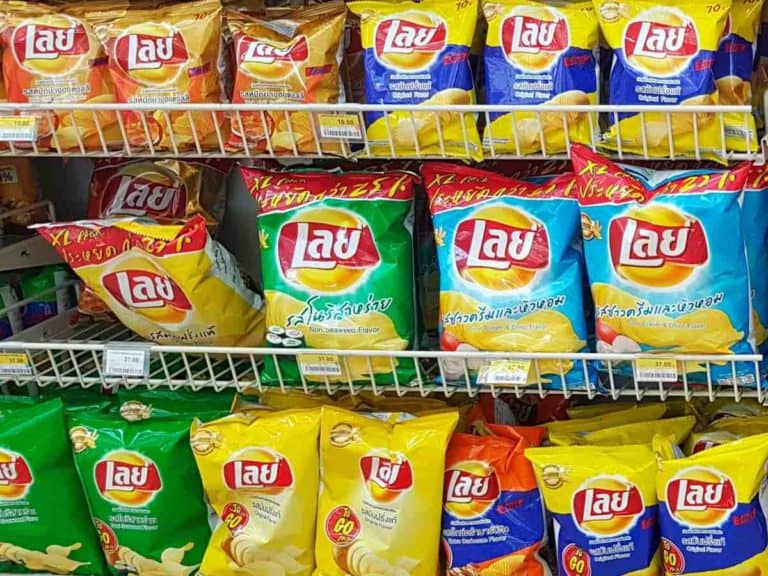
![How To Store Matzo Balls [With Recipes]](https://foodwine.com/wp-content/uploads/matzo-balls-235150240-768x576.jpg)
